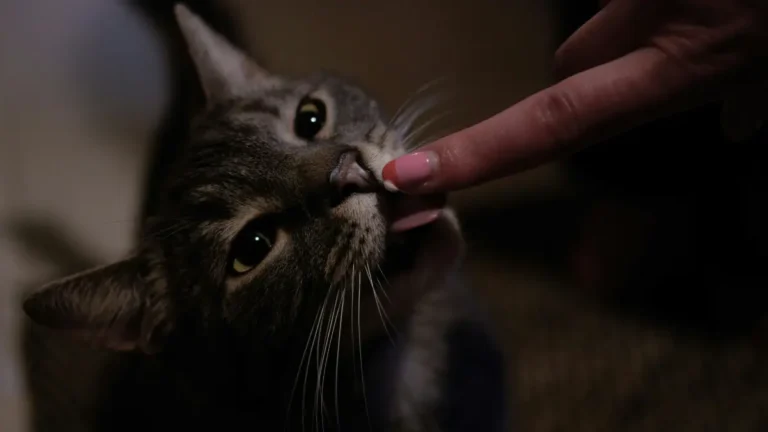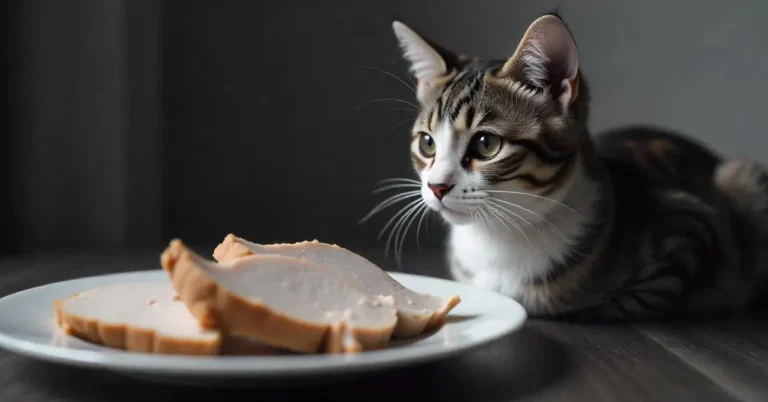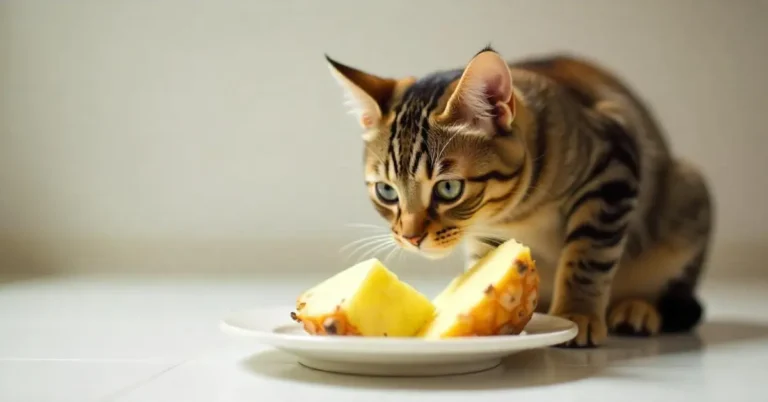Cats are known for their curious nature, which can sometimes lead them into trouble, especially when it comes to food. While some foods may seem harmless or even beneficial for humans, they can be dangerous for cats. Chocolate is a prime example of this. You may have heard that chocolate is bad for dogs, but what about cats? Can cats have chocolate without suffering any consequences? The answer might surprise you. To keep your furry friend safe, it’s crucial to understand why chocolate is a hazard and what to do if your cat accidentally ingests it.
Table of Contents
Can Cats Have Chocolate? Why It’s a Dangerous Treat
Many pet owners wonder, “Can cats have chocolate?” The answer is a resounding no. Chocolate, which is an enjoyable treat for humans, can be extremely harmful to cats. Understanding why chocolate poses such a significant danger is essential for any responsible cat owner. This guide will provide you with everything you need to know about the harmful effects of chocolate on cats and what to do if your furry friend accidentally consumes it.
Why Is Chocolate Bad for Cats? The Toxic Ingredients Explained
The primary reason why chocolate is harmful to cats lies in two toxic compounds: theobromine and caffeine. Both of these are classified as methylxanthines, substances that are easily metabolized by humans but much less so by cats and dogs. Can a cat eat chocolate without getting sick? The answer is clear—no, because even a small amount of theobromine can have serious consequences.

Can Chocolate Kill Cats? Understanding the Severity
The question of “can chocolate kill cats?” is not exaggerated. The severity of chocolate poisoning can be fatal if left untreated. Cats metabolize theobromine slowly, so it can accumulate to dangerous levels quickly. The toxic dose varies depending on the type of chocolate and the size of the cat, but dark chocolate and baking chocolate contain the highest levels of theobromine and pose the most significant risk.
The Symptoms of Chocolate Poisoning in Cats
Recognizing the signs of cats and chocolate poisoning can be the difference between life and death for your pet. Here’s what to look for:
- Initial Symptoms: Vomiting, diarrhea, and restlessness.
- Advanced Symptoms: Rapid breathing, tremors, seizures, and increased heart rate.
The faster you identify these symptoms, the better the chance your cat has for a full recovery. If you’re asking, “is chocolate bad for cats?”—the symptoms above should make it clear that the answer is a resounding yes.
Is Chocolate OK for Cats in Any Form?
You might be wondering, “is chocolate ok for cats if it’s just a small amount?” The answer is still no. Even tiny amounts can be harmful. While white chocolate contains the least amount of theobromine, it’s still not safe due to its fat and sugar content. The question should never be “can cats have chocolate in moderation?” but rather, “how can I ensure my cat never has access to chocolate?”
Types of Chocolate and Their Toxicity Levels
Different types of chocolate have varying levels of theobromine and caffeine, making some more dangerous than others.
- Dark Chocolate: Contains the highest theobromine concentration, making it highly toxic.
- Milk Chocolate: While less toxic than dark chocolate, milk chocolate can still be harmful if ingested in significant amounts.
- White Chocolate: Contains minimal theobromine but is still unhealthy due to sugar and fat.
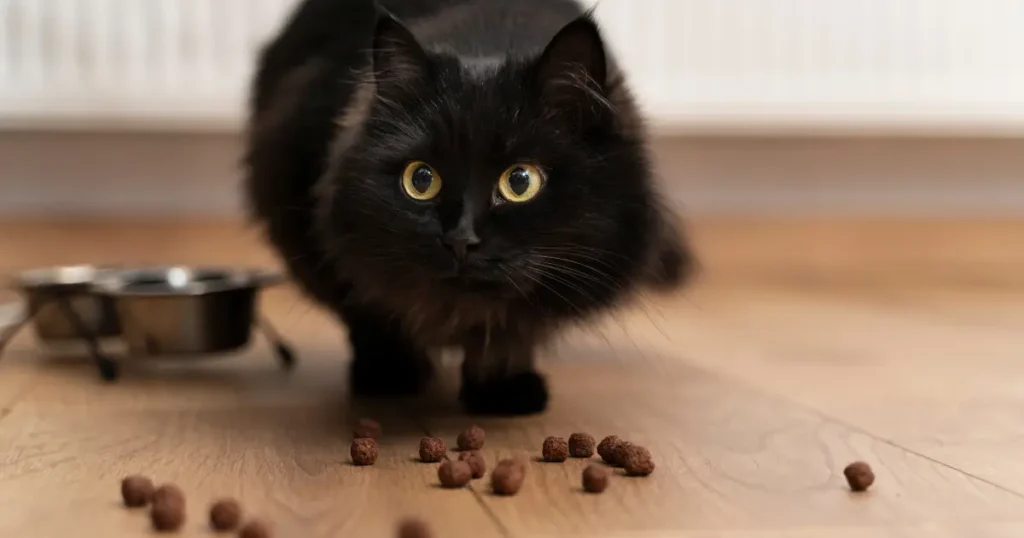
How Much Chocolate Is Dangerous for Cats?
It’s crucial to know that even a small piece of chocolate can be dangerous for your cat. The toxicity level depends on the amount of chocolate consumed and the type of chocolate. Can a cat eat chocolate without consequences? Unfortunately, no. Even half an ounce of dark chocolate can be toxic for a small cat. Always err on the side of caution when it comes to cats and chocolate poisoning.
Immediate Steps to Take if Your Cat Eats Chocolate
If you discover that your cat has eaten chocolate, time is of the essence. Here’s what to do immediately:
- Remove the Chocolate: Make sure there is no additional chocolate your cat could get into.
- Call Your Veterinarian: Contact them to describe what type of chocolate was consumed and how much.
- Monitor Your Cat: Keep an eye out for symptoms like vomiting, rapid breathing, or tremors.
- Induce Vomiting (Only if Advised): In some cases, your vet may recommend inducing vomiting to remove the toxin before it’s fully digested.
Veterinary Treatments for Chocolate Poisoning
When it comes to treatment, your vet may take several actions to ensure your cat’s safety:
- Inducing Vomiting: This helps expel the chocolate before it’s fully absorbed.
- Activated Charcoal: Administered to prevent further absorption of theobromine.
- IV Fluids: Used to help flush toxins from the body and support kidney function.
- Medications: Depending on the symptoms, your vet may use medications to control seizures or stabilize the heart rate.
Can Cats Have Chocolate? Why It’s Best to Keep It Out of Reach
The best way to protect your cat from chocolate poisoning is by preventing exposure altogether. Chocolate and cats don’t mix, so always store chocolate and other toxic foods out of your pet’s reach. Training your cat to stay away from kitchen counters and dining tables can also help minimize the risk.
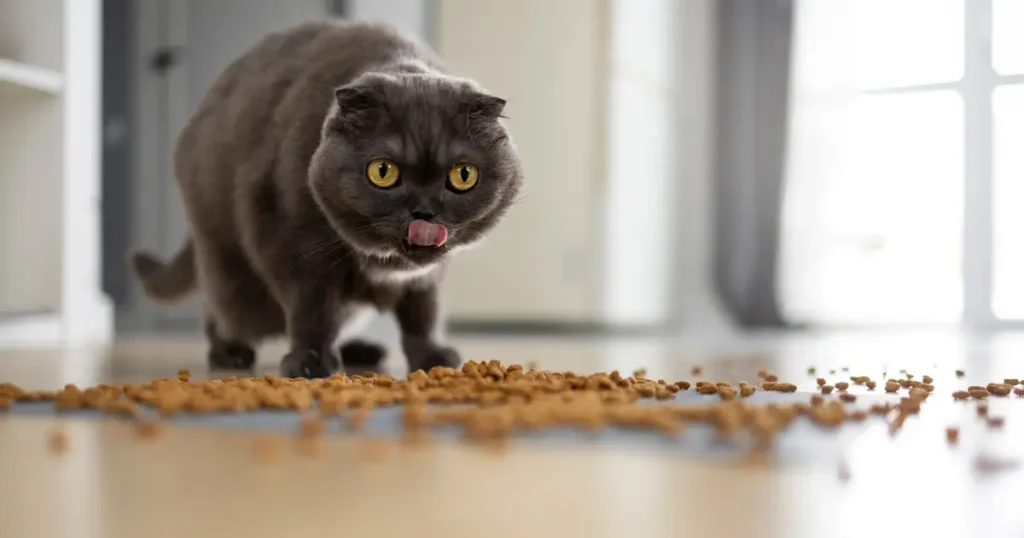
Why Cats Aren’t Naturally Attracted to Chocolate
Cats are obligate carnivores, which means their bodies are designed to process meat, not sweets or carbs. They lack taste receptors for sweetness, which explains why they don’t typically crave chocolate like some dogs do. However, curiosity can still lead a cat to sample chocolate, so it’s essential to remain vigilant.
Other Foods That Pose Similar Risks
If you’re wondering “is chocolate ok for cats,” you might also consider other foods that are toxic. These include:
- Grapes and Raisins: Can cause kidney failure.
- Onions and Garlic: Lead to anemia.
- Xylitol: Found in sugar-free candies and can cause hypoglycemia.
Can Cats Have Chocolate? The Role of Prevention
Preventing chocolate poisoning starts with awareness and preparation. Store chocolate in sealed containers and train your cat to stay out of certain areas. Additionally, make sure friends and family members know not to share human food with your cat.
Alternatives to Chocolate for Cats
If you’re looking for safe treats, there are plenty of options:
- Catnip Treats: Most cats love catnip, and it’s entirely safe for them.
- Cooked Chicken or Fish: High in protein and delicious for your feline.
- Commercial Cat Treats: Designed specifically for cats and meet their nutritional needs.

FAQs About Cats and Chocolate
1. Can chocolate kill cats?
Yes, chocolate can be lethal for cats, especially dark and baking chocolate due to their high theobromine content.
2. Is chocolate bad for cats even in tiny amounts?
Yes, even a small amount can cause mild to severe symptoms and should be avoided.
3. How long does it take for symptoms of chocolate poisoning to appear?
Symptoms can appear within a few hours and last up to 24 hours or longer.
4. What should I do if I can’t reach a vet and my cat has eaten chocolate?
Try to reach a vet hotline for advice and follow their instructions. They might suggest inducing vomiting in certain cases.
5. Can cats develop a craving for chocolate?
No, cats don’t have a sweet tooth and are unlikely to develop a craving, but their curiosity might still lead them to taste it.
Conclusion
Can cats have chocolate? Absolutely not. The risk of chocolate poisoning is real and severe. Always keep chocolate and similar toxic foods away from your cat, and stay informed about the symptoms and treatments. Your cat’s health depends on it.


